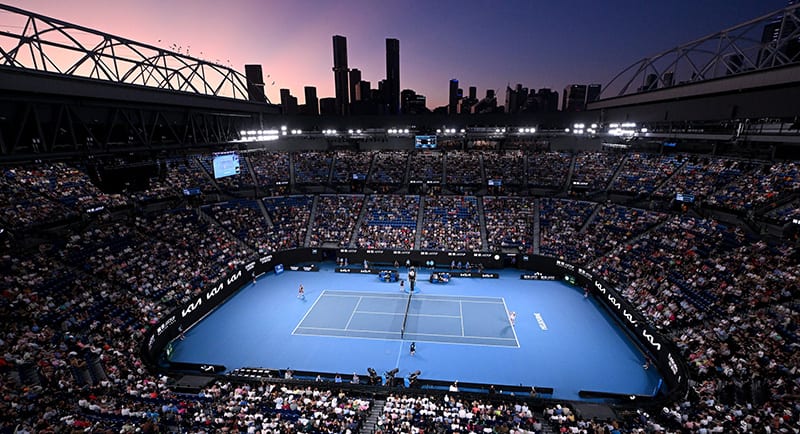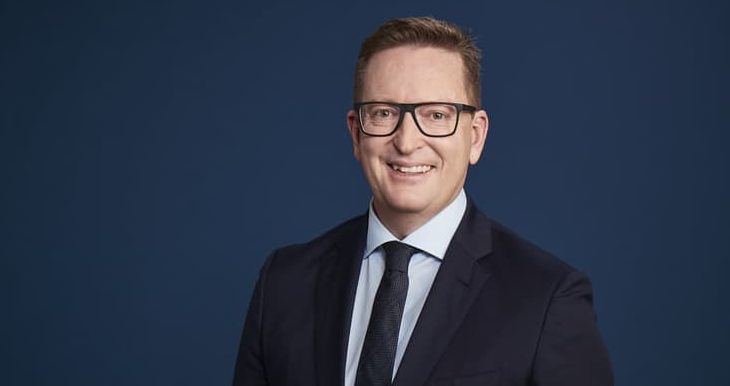After another successful summer of tennis for Channel Nine, the broadcaster is now moving to one of its other big-ticket items in 2023, the perpetually popular Married at First Sight (MAFS). Ahead of this launch, Mediaweek caught up with Nine’s Chief Sales Officer, Micheal Stephenson, to discuss the importance of the tennis and MAFS as a launching pad, and Nine’s commercial plans for 2023.
Read Also: Married at First Sight executive producers feel “proud” to be world-wide industry leaders
“We’ve had a clear and consistent strategy over the last number of years”, said Stephenson. “My expectations about commercial performance are very high. I’m very fortunate that I work in a business with such a unique set of assets, each of those assets is so dominant in its particular channel. You think specifically about television right now and of course, we just started the year with the biggest marketing platform for brands that’s available in summer, the Australian Open. In key demos, it’s close to a 50% share of 16-39’s and 25-54’s, and grocery shoppers with children. Then we launch the biggest entertainment show of the year, Married at First Sight. Part of our plan for the last number of years is getting off to a quick start, and this year will be no different.”

When asked about the halo effect that a sporting event such as the Australian Open provides to a broadcaster, despite not factoring into the TV ratings survey, Stephenson said that it was imperative for Nine to get off to a quick start every year.
“It’s the most critical part of the entire year. We have ratings that are measured from the 1st of January to the 31st of December every year and that’s how we think about it both in terms of audience and revenue. We’re very fortunate that in the back half of January, we get to promote all of our upcoming content from a TV point of view to the biggest cross-platform and engaged audiences. That allows us to launch really neatly into the entertainment schedule, which of course in the first part of the is dominated by Married at First Sight. You can’t put a price on that, getting off to a quick start is critical.”
Pairing the Aus Open and MAFS
When asked about the value MAFS brings in its traditional start of the year timeslot, or if it would provide more value in a different timeslot, Stephenson said that the Australian Open and MAFS is a winning combo that they don’t plan to break up.
“We don’t think about Married at First Sight in isolation. It is really the combination of MAFS and the AO that gets us off to a quick start. It’s not a quick start for two weeks, it’s a quick start for three months. Those two things in combo allow us to do that.”
Stephenson said that getting the programming schedule and desired commercial outcomes correct is a delicate balancing act, especially when a broadcaster has new formats to launch.
“We’ve got two big new formats in The Summit and Gordon Ramsay’s Food Stars. How do you use existing content that’s guaranteed to deliver you an audience to launch those franchises successfully? It’s a high stakes game of Tetris and getting it right is really important.”

Importance of Total People v Key Demographics
Off the back of another TV ratings survey which saw a debate over the value of total audience versus performing well in key demographics, Stephenson said that the discussion is irrelevant, with Nine only focused on key demos.
“I don’t think I’ve ever had a conversation with an advertiser about total people, ever – it’s why we don’t focus on it, it’s just an irrelevant number. The thing that is important and that advertisers buy are those three demos, 16 to 39 year olds, 25 to 54 year olds, and grocery shoppers with children. As we increasingly consume content in a digital environment for us through 9Now, you are building to not only use a demographic as a base level of targeting but to become a bit more personalised, utilising our first-party data.
“This starts to create a different trading currency. I still believe you’ll always buy advertising against the demo, but you might optimise against a particular data segment. When you think about the pure demographics, those demos are broadening as well. 25 to 54 continues to be the dominant demographic because it’s where the bulk of the audience is, but those demographic profiles will change over time as well, I suspect.”
The future of Nine
When asked about what the commercial future of Nine looks like, Stephenson pointed to the enormous role that 9Now and other tech innovations will play moving forward.
“All of the streaming is now in ultra high definition 1080p, 50 frames per second. The picture quality is as good as you will get anywhere. We are continuing to invest and rollout out additional functionality. Over the course of the last four to six weeks, we’ve launched the start-over functionality. It’s things like that that will continue to enhance the consumer experience. That drives the audience and that allows us to commercialise. From a commercial perspective, we continue to invest in really innovative digitally focused ad products. Such as pause ads or interactive advertising and shoppable ad formats, etc. Which creates really interesting opportunities for brands.”
